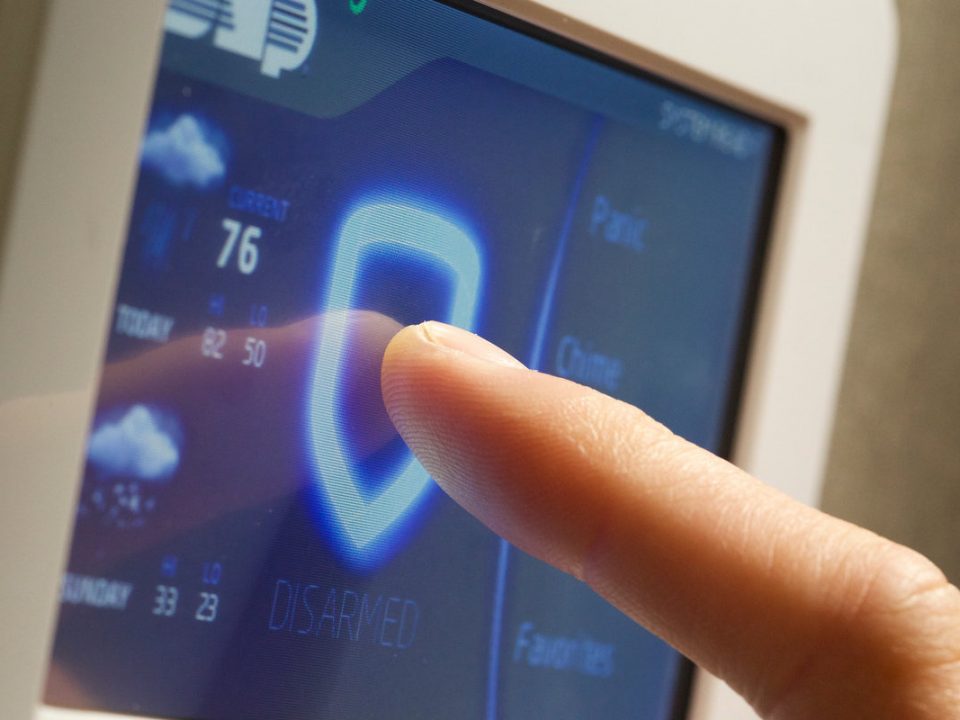As part of our ongoing mission to help educate Charleston and the Lowcountry about home and business security systems, this blog series will focus on the different aspects to take into consideration when choosing the right security camera system for your home or business.
Read Part 1: Camera Resolution Explained Here
Read Part 2: DVRs & NVRs Explained Here
Now that we’ve covered most of the core equipment you’ll need to know about before getting a security camera system in Part 1 and Part 2 of this guide, today we’re going to look at some additional camera characteristics you should review with your security consultant before choosing a surveillance system for your location.
Field of View & Lens Focal Lengths
In Part 1 of this series, we covered security camera resolution and its affect on overall viewing quality. With your camera resolution settled, the next camera aspect to cover is field of view or FOV. FOV defines the area that is visible through the camera at a particular location. Anything outside of the FOV is not captured by the camera and thus is not viewable via live view or playback.
What shapes the camera’s FOV is the focal length of the camera lens. Cameras with smaller focal lengths (3.6mm, for example) have a larger FOV and are sometimes referred to as wide angle lenses. These smaller focal lengths are great for covering large areas like offices or yards, however capturing larger areas comes at cost: you won’t be able to capture much detail about objects or people within that large area, especially at greater distances.
For capturing more detail at a greater distance, larger focal length cameras (>8mm, for example) must be used. Your FOV will be greatly reduced, but you’ll be able to capture objects or people with great detail at longer distances. These are great if you have a boat or a car that is far from any power source (and a camera can’t be ran to that particular location) or if you have a long hallway that you need covered by your camera system.
Fixed vs. Varifocal Camera Lenses
So what happens if the object you are focusing on with your larger focal length camera is repositioned? If you have a fixed camera lens, then you’ll have to contact your security company to reposition your camera. If you have what’s know as a varifocal camera, you’ll quickly be able to adjust the focal length of your camera (defined by a range like 3.5 – 8mm) to capture the repositioned object, without repositioning your camera.
In general, most interior spaces can be covered using a fixed camera lens; the scene doesn’t typically change much, particularly in smaller rooms, so a fixed, smaller focal length camera should keep you covered. If, however, you want to focus on an entryway, particularly for our business clients, from long range, definitely opt for a varifocal camera.
Ultimate Perspective: Pan Tilt Zoom Cameras
If you’re looking for an all-encompassing solution (long and short range, wide angle and focused views), then you should consider a pan-tilt-zoom camera or PTZ camera. PTZ cameras allow you to remotely control the view of your camera by either panning the camera horizontally (panoramic view), tilting the camera vertically (high and low views) or zooming the camera (focus on long range objects, buildings or people).
Each PTZ camera will have particular ranges for panning, tilting and zooming, and several can be programmed to move along a predefined path automatically throughout the day according to a schedule. This is particularly handy if you have to cover large areas like warehouses, retail stores or parking lots/garages.
Nightviews: Infrared Cameras
A camera that’s equipped with infrared (IR) technology allows you to capture and record views at night. IR cameras are important for areas of your location that are poorly lit at night, like many parking lots or yards. Like focal length, most IR cameras have a range on how far objects can be seen at night; this is called the illumination range. There are standard illumination ranges for most IR cameras but newer models can carry long range IR capabilities as well.
Summary
Although that was a lot of information to absorb in one reading, we hope you’ll now have a solid understanding of what kind of cameras will work best for your particular location based on the distance of the view you’re trying to capture.
Have any more questions about security cameras or surveillance systems? Let us know about it on Facebook or give us a call: (843) 789-9994.




